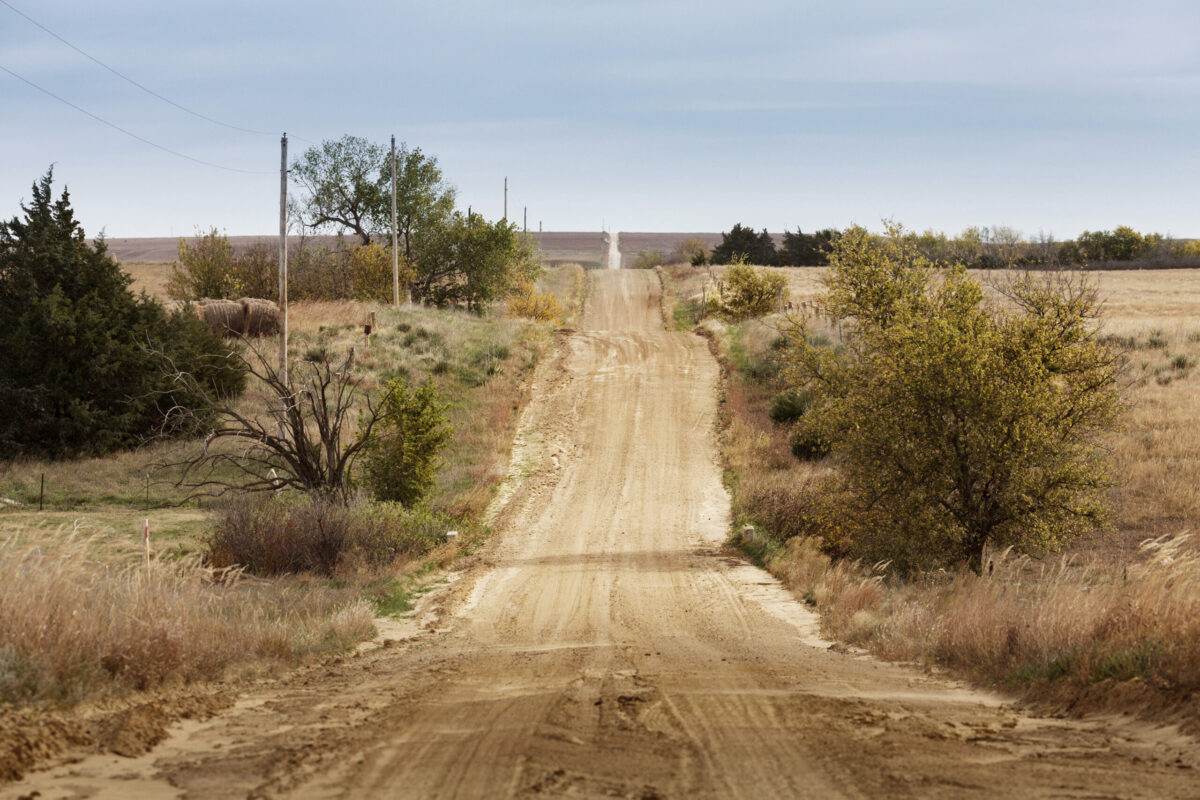On the evening of June 3, 1889, Patrick Cleary grabbed a hatchet from beside the courtroom woodstove and burst outside into the darkness. Some later suggested Sheriff Thomas Boyle had intentionally released his prisoner, believing Cleary stood a better chance of escaping the lynch mob gathered outside than Boyle had of stopping them. Just that morning the sheriff had rescued a juror from a crowd of angry citizens demanding to know why the man had voted to acquit Cleary of murder. Many in the crowd believed Cleary had bribed the man, and some thought the juror himself merited lynching.
Cleary was struck by a bullet as he ran across the courthouse lawn, though it remained unclear whether the shot came from startled guards or angry citizens. Regardless, the vigilantes subsequently captured and lynched the wounded would-be escapee. The history of the Old West is replete with gunfights, jailbreaks, lynchings, murder convictions and even hung juries. But the Cleary case in Lincoln County—the one in Kansas, not the one in New Mexico Territory that witnessed the 1878 Lincoln County War—featured all of those elements in one violent saga.
The Dispute
Over the years neighboring ranchers and fellow Civil War veterans Patrick “Patsey” Cleary and Jesse Turner had grown to hate one another. In 1888 the bad blood between them, brought to a head in a dispute over watering rights for their cattle herds, finally erupted. Cleary was in his mid-40s, Turner about 60. They had grown their herds to 300 head and 100 head, respectively.
On January 2 Cleary happened across Turner’s 12-year-old son, Charles, and 15-year-old son, Isaiah, tending the family herd at a watering place on the west branch of Elkhorn Creek. Cleary told the boys to inform their father that he’d recently bought the watering and grazing rights to the site, and that the Turners’ cattle were no longer welcome there. When Turner joined his sons at the watering place that afternoon, they gave him Cleary’s message. It ran counter to Turner’s earlier understanding from Charley Jones, who lived on 80 acres adjoining the watering place. So, Jesse again confirmed with Jones that the Turners were, in fact, welcome to water their cattle on the creek. Given his stormy history with Cleary, Turner resolved to borrow a pistol for his own protection.
Later that day Cleary ranch hand John Demming rode out to the Turner ranch to deliver a note warning Jesse to keep his cattle away from the watering place:
“Jesse Turner—Dear Sir: You are hereby notified not to trespass on sec. nine where your cattle watered and fed yesterday and today, as I have bought the right of grass and water on the place and need it for my own cattle. I will not have them there, and you will oblige me by keeping them off.
Respectfully yours, Pat. Cleary”
Jesse wasn’t home, so Demming left the note with Turner employee Arthur White, who happened to be loading a cap-and-ball revolver at the time. Another revolver lay in plain view on a table. When Demming reported back to his boss, Cleary concluded the Turners were set to kill him should he try to prevent them from watering their cattle.
Meanwhile, Turner had visited neighbor John W. Jaycox, a few miles south in Ellsworth County, to discuss the situation and borrow a pistol. As he had no other watering place for his cattle, Turner explained to his neighbor, he had no choice but to water his cattle on the Elkhorn the next day, Cleary’s warning be damned. Jaycox, who’d had his own run-ins with Cleary, loaned Turner a loaded revolver.
On arriving home, Turner read Cleary’s note—the second “don’t trespass” warning of the day—and told son Charles nothing had changed. They simply couldn’t deny their cattle water.
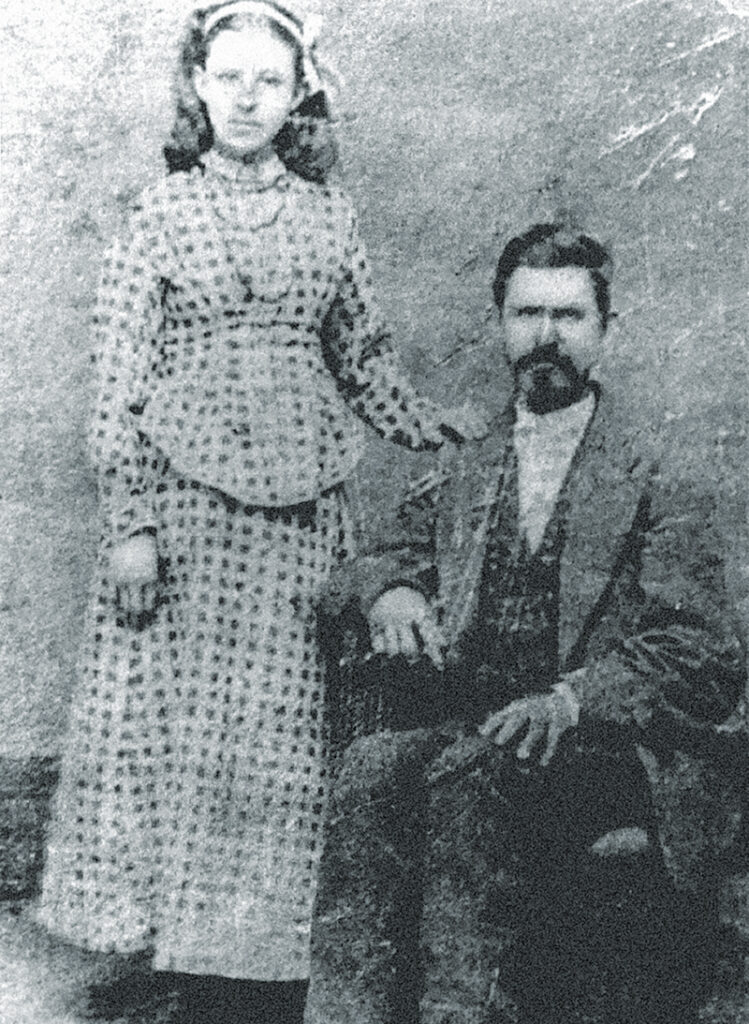
Like Turner, Cleary also made preparations for a potentially violent showdown over the watering place. The next morning, January 3, he visited neighbor Wellington J. Mills, also from Ellsworth County, and borrowed a revolver to supplement one he’d already borrowed from relative George Beggs. On arriving home, Cleary made bullets, pocketed one of his revolvers and went to feed his cattle from a corncrib near his farmhouse.
Around 9 a.m. Turner reined in his horse on the road beside the Cleary place and called for Pat to show himself. Cleary obliged and walked to within a few yards of where Turner sat his horse, armed with his borrowed revolver. Cleary’s 16-year-old son, John, looked on from the farmyard.
“What are you going to do about that watering place?” Turner asked.
“I don’t propose to let you water there,” Cleary replied. “I have bought the ground and the privilege of the watering place myself, and I need it for my own cattle.”
Turner then told his combative neighbor that he planned to water his cattle on the creek, and Cleary could not stop him.
“We’ll see about that,” retorted Cleary.
After a further exchange of insults, Turner raised a club and hollered, “You son of a bitch, I will kill you now!”
When Turner’s horse stepped closer, Cleary jumped back and yelled, “God damn you, don’t you hit me with that club!”
Turner promptly laid down the club on his saddle pommel. But then he yanked the mitten from his right hand and grabbed for his revolver. Cleary also drew his. According to Cleary and son John (the only other surviving eyewitness), Turner triggered his revolver, which misfired, and was aiming a second time when Pat shot him once over the left eye. Turner died instantly. When a township constable arrived on scene, Cleary turned over his revolver and surrendered, claiming self-defense.
The Murder Trial
Once news of the fatal shooting reached the county seat at Lincoln (population 1,000), local newspapers broke the explosive story. The Lincoln Beacon disclosed that more than a decade earlier Cleary had shot and severely wounded neighbor John Lyden. The paper also tied together two related events that put Cleary in a bad light—Cleary’s alleged attempt to murder Jaycox for having testified against him in a prior case, and Cleary’s fatal shooting of Turner, who had testified against Cleary in the same case. “One of the five men [Cleary] threatened has been disposed of and an attempt made upon the second,” wrote the paper, “and others feel that it may only be a question of time when others go the way of Turner.” The paper also quoted a reported threat from Cleary to act on his grudge against those men living along Elkhorn Creek: “I will ride a horse and leave a bloody trail along the Elkhorn Valley so that my name will be handed down to future generations as the bloody desperado Pat Cleary.”
Five weeks after the Turner killing jury selection began in Cleary’s murder trial at the Lincoln County Courthouse. Three attorneys prosecuted Cleary, and four defended him. Among Cleary’s defense team was fellow Civil War veteran Jeremiah G. Mohler. In 1879 Mohler had earned notoriety for having successfully obtained the dismissal of multiple first-degree murder charges against six Northern Cheyennes. The killings had been committed in western Kansas amid their band’s headline-grabbing flight from a reservation in Indian Territory (present-day Oklahoma) to their northern homelands.
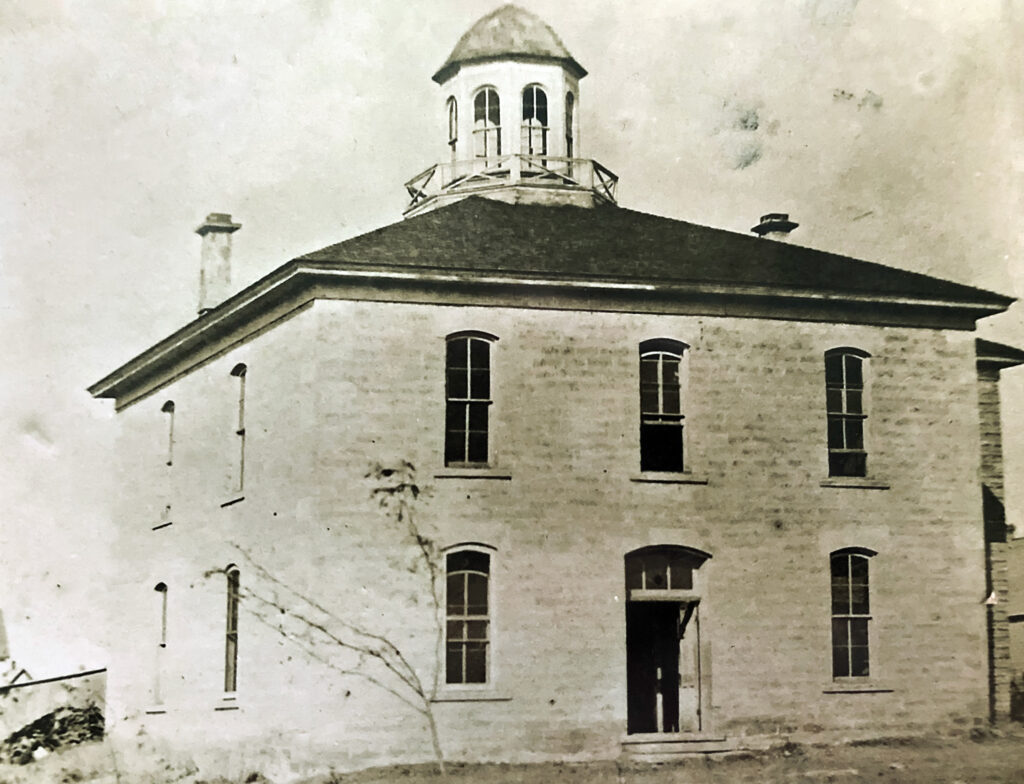
The prosecution presented as evidence Cleary’s pretrial statements, son John’s testimony about the shooting and the testimony of Jaycox, who related how Cleary had earlier tried to kill him. Other prosecution witnesses testified about threats Cleary had made over the years against Turner, Jaycox and other locals. Their statements elaborated on the Beacon’s reference to the five men who had testified against Cleary in another case, Cleary’s threat to kill them and his “bloody desperado” boast.
A half-dozen prosecution witnesses spoke to Turner’s character, testifying that he’d been a peaceable fellow. Several defense witnesses contradicted their claims, insisting Turner had a reputation for being quarrelsome and had gone about armed on prior occasions. One witness testified that he’d been standing outside a community dance held the previous autumn when he spotted a revolver-shaped bulge in Turner’s coat pocket. When asked why he was carrying a gun, Turner reportedly answered, “I calculate to kill Mr. Patsey Cleary with that if I can.”
On February 21, having heard six days of testimony and opposing arguments, the jury rejected Cleary’s self-defense claim and convicted him of second-degree murder. Judge Sampson O. Hinds sentenced him to 20 years of hard labor in the Kansas State Penitentiary. So it seemed those Lincoln County residents who’d been threatened by the self-proclaimed desperado could rest easy under the reasonable expectation Cleary would die in prison or at least age to the point of infirmity. Or could they?
Attorney Mohler immediately filed an appeal with the Kansas Supreme Court. Among his arguments was an allegation that juror Oscar Gorten had provided false or misleading answers during the jury selection process to hide his prejudice against Cleary. As proof, Mohler submitted affidavits from two men swearing that the morning after the killing Gorten had told them Cleary was a bad, desperate man and should be hanged to save the county further expense.
During its July term the Supreme Court accepted Mohler’s argument, reversed Cleary’s second-degree murder conviction and sent the case back to Lincoln County.
Returned to Lincoln for retrial, Cleary was again defended by the same four attorneys, with three attorneys arguing for the prosecution. Much of the testimony of the 70 witnesses at the retrial mirrored that given in the original trial. Claims that an unfair or partial juror had been seated would also resurface in the retrial—only this time the juror was allegedly biased for Cleary.
The trial began on May 16, 1889, the jury receiving the case late in the afternoon on Wednesday, May 29. For four days straight jury foreman John P. Harmon reported to the court that jurors were unable to agree. They kept at it, but as deliberations ground on, townspeople’s concerns turned into indignation.
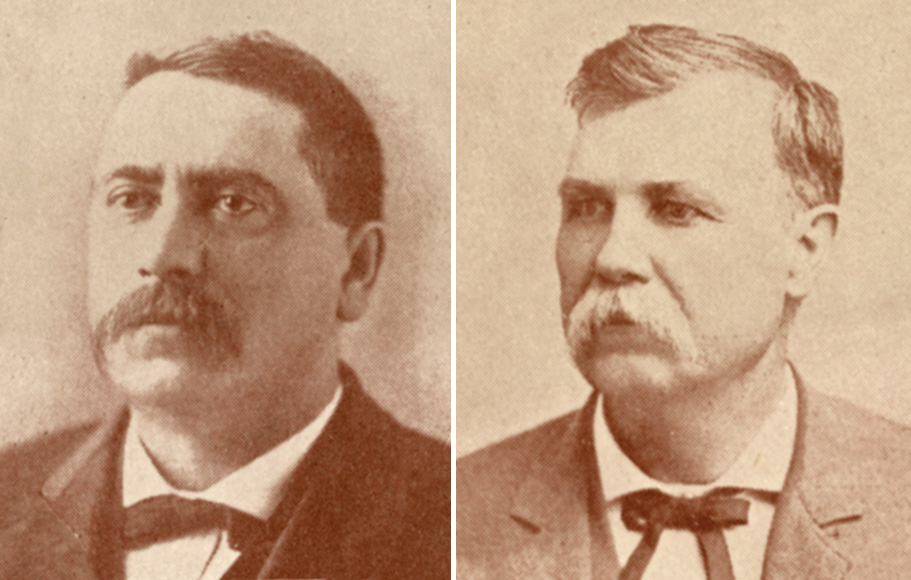
By Sunday many believed that bribery of a juror or jurors had tilted the scales of justice toward Cleary. More alarming to authorities were openly expressed threats to lynch the accused. They responded with a declaration “to meet with firearms any attempt at violence” and placed an extra guard over Cleary. Concerned such threats might unduly influence the jury, they added two more bailiffs to protect jurors while they deliberated.
Early the next morning—Monday, June 3—the jury remained hung after its eighth ballot, and Judge William G. Eastland discharged it from duty. Within a half hour Cleary, seemingly unwilling to press his luck with yet another trial, pleaded guilty to the substantially reduced charge of third- degree manslaughter. Judge Eastland handed him the maximum allowable sentence of three years’ confinement at hard labor.
The mob gathers
The citizens of Lincoln were in disbelief. After all, the first jury had convicted Cleary of murder. How could the second jury have hung after hearing the same basic facts from virtually the same witnesses?
An explanation presented itself soon after the jury’s discharge when jurors volunteered that foreman Harmon—the former county superintendent of schools—had been the sole holdout for acquittal. Many citizens (and some jurors) drew the conclusion Harmon had lied about his “fairness and impartiality” during jury selection so he could get on the jury and hang it. His motive? Money.
As the rumor spread, townspeople’s unhappiness turned into full-blown anger at foreman Harmon. The morning of the jury’s discharge a mob of angry men confronted Harmon on the street, demanding to know why the foreman had hung the jury. That’s when Boyle stepped in. For Harmon’s safety, the sheriff took the foreman to the courthouse, where Cleary was also being held.
The fury of the crowd rapidly spread, and by midafternoon several hundred men had gathered outside the courthouse. Hollering up from the street, they again demanded Harmon explain why he hung the jury.Through a courthouse window he insisted that no one had offered him a bribe, and that he’d relied only on the evidence. Although the crowd jeered in disbelief, it eventually drifted away. But its dispersal was only the quiet before the storm.
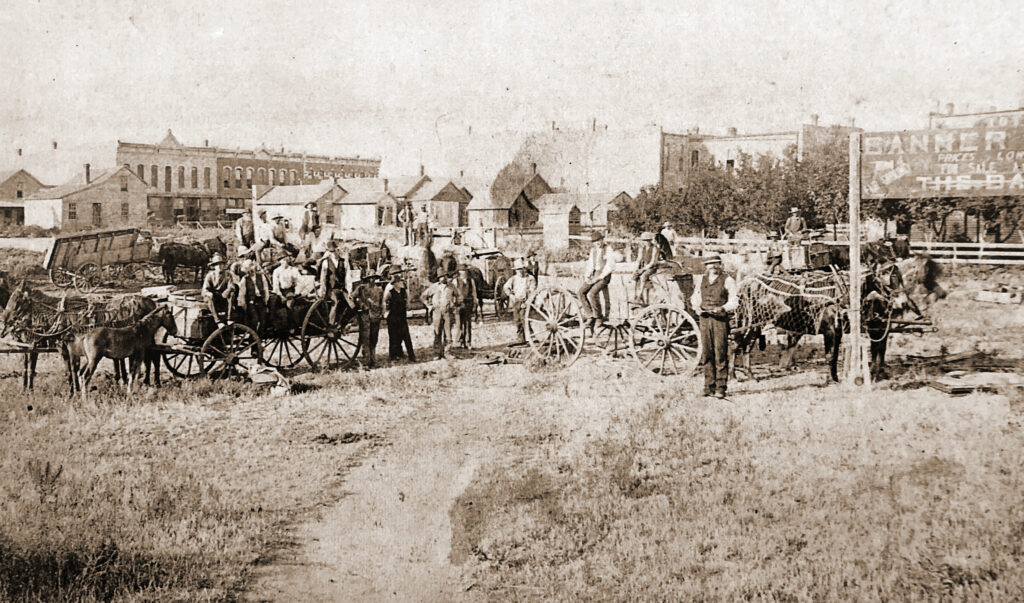
Men continued to pour into town from throughout Lincoln County and neighboring Ellsworth County, swelling the population as well as the rumors. The bribery claim mixed with snippets of testimony recalled by those who had packed the courthouse during the trial. Particularly memorable were Cleary’s threats to kill men for having
testified against him in a prior trial and his intention to be remembered as a bloody desperado. Those threatened had good reason to fear Cleary would do just as he’d promised after serving his three-year term.
Come nightfall foreman Harmon managed to slip out the back of the courthouse. Had he remained, the Salina Daily Gazette later observed, he “would have gone by the rope route in company with the murderer, as the people seemed determined to avenge the murder of old man Turner.”
Around 9:30 p.m. Cleary, having watched Harmon slip away unnoticed, attempted his own escape. It looked promising at first. He made it outside with hatchet in hand and sprinted across the courthouse square. It is possible Sheriff Boyle released the convicted prisoner in an effort to spare him from a lynching. Others have suggested his escape from custody was legitimate. Regardless, he didn’t get far. As Cleary literally ran for his life, a bullet fired by an unknown assailant caught him in the left side, dropping him to the ground. Moments later a mob of 300 to 400 men materialized to seize Cleary.
The vigilantes dragged the wounded man to the Fourth Street railroad bridge, on the southern outskirts of Lincoln. During his terrifying half-mile journey Cleary confessed to having slain three men and attempted to kill two others. But each was done in self-defense, he insisted. Cleary, the Lincoln Beacon reported, “was stubbornly obdurate and claimed justification for all violent acts he had ever taken part in.” Ignoring their captive’s pleas, the mob cinched a rope around Cleary’s neck and unceremoniously hurled him off the west side of the bridge. His body was left hanging there until morning.
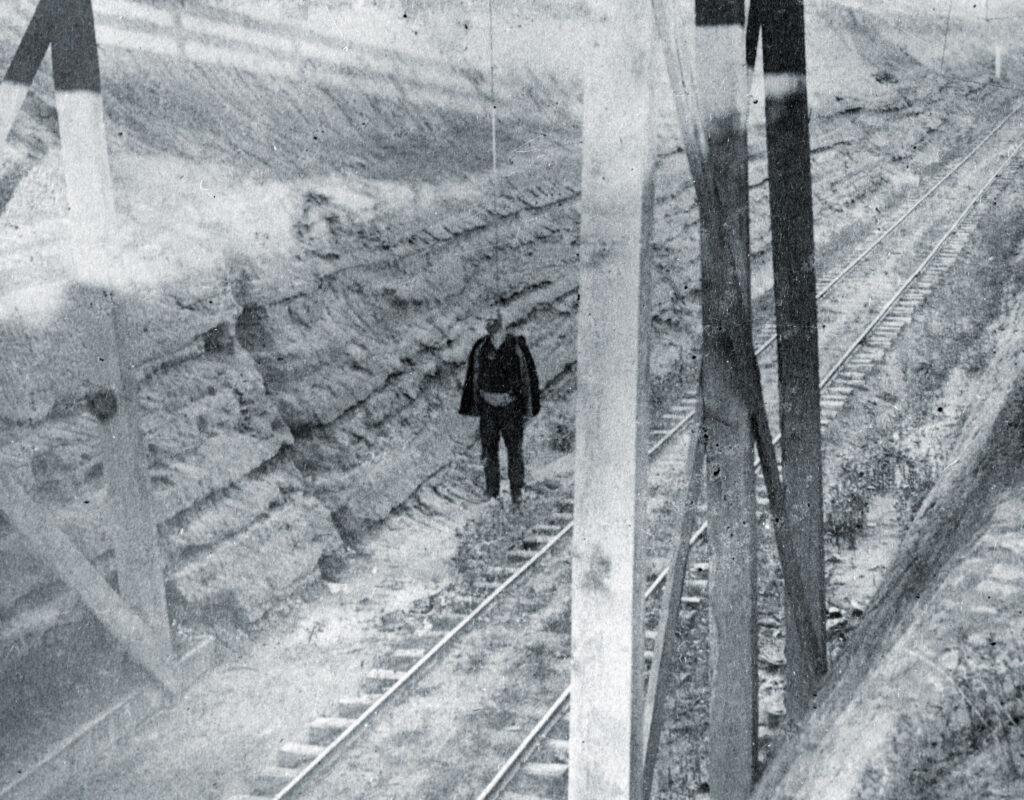
Aftermath
In the immediate wake of the lynching newspapers proffered several justifications for the mob’s actions. Some reprinted the pretrial stories about Cleary’s bad character and earlier misdeeds. Others ran new stories speaking to his bad intent. For example, George Beggs, the relative who’d loaned Cleary a revolver a few days before the gunfight, claimed Patsey had first tried to “lie him” into killing Turner. When Beggs refused, Cleary replied, “Then I will do it myself.” And he did. Beggs was certain his relative had committed cold-blooded murder.
“Accounts are rife of murders alleged to have been committed by the late Patsey Cleary” the Lincoln Beacon reported. One such murder cited by the Beacon and the other two local papers—the Lincoln County Democrat and Lincoln Republican—was “the wanton killing of a Negro at Fort Smith, Ark., during the war,” purportedly after the man had “[taken] up too much of the sidewalk.” Cleary also allegedly killed brother-in-law Cornelius Deits and a man in Colorado. According to the Lincoln papers, Cleary also shot a man in Arizona and “is known to have shot and wounded three men in this county at different times.” Back in 1869 other Kansas newspapers had reported that at a store on Elkhorn Creek he’d shot and wounded four men. Three of the victims—George Green, Henry Tucker and John Lyden—had served as Forsyth Scouts and fought Cheyennes the previous September at the Battle of Beecher Island in Colorado Territory. After that “shooting affray,” the Daily Kansas Tribune had opined, “the prospects were that [Cleary] would be lynched if caught.” Its prediction had been 20 years premature.
Based on the old and new accounts, as well as the events testified to at trial, the Lincoln Beacon concluded Cleary unquestionably “was a vicious and dangerous ‘badman’…[whose] highest ambition seemed to be to be regarded as a ‘terror.’”
The Lincoln Republican went so far as to opine that the occasional lynching might actually prove beneficial. “A few injudicial hangings have a good effect frequently,” it wrote, “in Kansas as well as in communities that claim a higher civilization than we.”
In contrast to such justifications for extralegal execution are the views of a formidable man who like Cleary, Turner and many others in the Lincoln and Ellsworth area raised cattle out West in the 1880s. Fourteen years after the Cleary lynching none other than “Cowboy President” Theodore Roosevelt spoke to Congress from his bully pulpit. “No man is above the law and no man is below it; nor do we ask any man’s permission when we require him to obey it,” he said. “Obedience to the law is demanded as a right; not asked as a favor.” Such sentiments help explain why Roosevelt was later immortalized in the Black Hills of South Dakota, his visage carved 60 feet high in the enduring granite.
Lawton R. Nuss is an honorary marshal of Dodge City, a frequent judge in cowboy poetry contests and the retired chief justice of the Kansas Supreme Court. This article is a modified version of one published in the July/August 2021 issue of The Journal of the Kansas Bar Association. Sources for both articles include period newspapers and court records.

